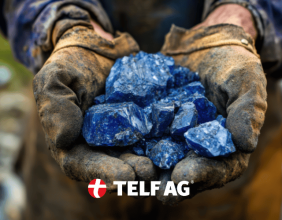Highlights
Babcock International PLC rises within the FTSE 100 following performance updates
Broader index movement muted as financials and defensives move lower
No major momentum shifts observed in FTSE defensives amid company updates
Babcock International PLC (LON:BAB), part of the FTSE 100 index, operates within the defence and engineering sector. The group is known for offering critical services across naval, nuclear, land, and aviation platforms. With operations spanning strategic national infrastructure support, the company has retained a place within the upper tier of the London equity markets, reflecting its relevance to government-backed programmes and industrial capabilities.
Babcock Rises Amid Broader Market Caution
The company showed positive price traction in an otherwise quiet FTSE landscape. While the broader index experienced limited changes due to weakness in financials and defensives, Babcock emerged as one of the notable movers during the session. Market attention turned to the group after recent updates that highlighted performance improvements and structural changes.
Sector Dynamics Pressuring Broader Market
Across the session, financial entities and traditional defensives within the FTSE 100 displayed weaker sentiment, applying pressure to index-level performance. Meanwhile, cyclical industrial entities such as Babcock appeared relatively insulated from the drag created by financial stocks. This divergence underscored shifting sentiment patterns, favouring companies delivering operational updates or engaging in new strategic directions.
Corporate Activity Elevates Trading Interest
Market participants took note of recent developments from Babcock, with announcements linked to capital initiatives and forward-focused revisions gaining attention. These activities contributed to higher trading interest, even as wider macro-level sentiment remained flat. The group's structured presence in service-heavy segments of defence and engineering offered resilience during times of sideways index movement.
FTSE Landscape Reflects Diverging Trajectories
The broader structure of the FTSE 350 and other segments continues to reflect diverging trends across sectors. Defensive segments, traditionally seen as consistent performers, encountered limitations, while specific industrial and service-related groups such as Babcock showed firm movement. This contrast is becoming increasingly visible during quieter trading sessions.
Babcock’s Dividend Profile Within Index Framework
Babcock has historically been featured within dividend-paying stocks on the London Stock Exchange. Its presence in categories such as FTSE Dividend Yield allows market watchers to monitor the company’s yield-driven attributes in relation to broader generating companies listed in the UK. This reinforces its relevance in segments where steady corporate distributions are followed closely.
No Clear Momentum Across Broader FTSE Indices
Outside Babcock, few entities demonstrated directional leadership across the FTSE ecosystem. With cautious sentiment prevailing among financials, and limited movement in utilities and consumer staples, overall activity appeared subdued. The index remained balanced between slight losses and selective gains, largely steered by updates from companies like Babcock.
Corporate Moves Reshape Sentiment Within the Index
The reaction to Babcock’s update aligns with a recurring pattern within the FTSE 100, where meaningful corporate changes continue to shape short-term sentiment. While broader macroeconomic narratives influence, entity-specific updates often drive intraday positioning, particularly during periods of low index-wide movement.
FTSE Indices See Mixed Action Across Segments
As the session progressed, a range-bound performance emerged across FTSE 350 and FTSE indices, with gains in selective engineering and industrial stocks offset by modest easing in core financials. This mixed trend reflects the underlying equilibrium between macro-level uncertainties and company-led shifts, of which Babcock’s performance is a current example.




